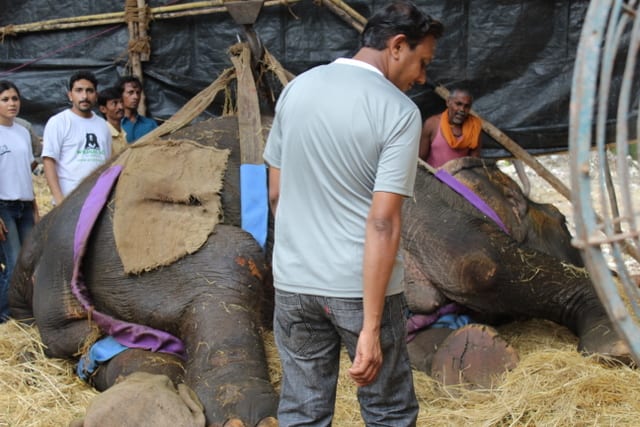Death of Indian Working Elephant “Bijlee” Starts Global Movement
We kill them by the thousands for their ivory or for “sport”; exploit them in circuses, and work them mercilessly to death. And we’re robbing them of their ancestral ecosystems in both Asia and Africa. Surely a record we can be proud of.

After decades of exhausting work for her masters, Bijlee was abandoned after her acute and very painful arthritis and other conditions prevented her from working. She was found by animal charities lying in a ditch by the side of a road. As usual this is totally preventable suffering.

by Jordan Carlton Schaul of University of Alaska on June 30, 2013
Source: National Geographic Newswatch
It was legendary Bollywood actor Amitabh Bachchan who essentially, with intention or not, launched this campaign to help working elephants through his tweeted and compassionate appeal to animal welfarists.
Early last week, Mr. Bachchan requested welfarists and the like, to come to the aid of one suffering begging street elephant (a type of working elephant) named “Bijlee” and it seems to have started a whole movement to end the working Asian elephant practice.
On June 26th, News Watch published a tribute to Bollywood superstar Amitabh Bachchan by India’s largest wildlife conservation and animal welfare organization, Wildlife SOS.
The tribute recognized the Bollywood icon for bringing attention to one 54 year old suffering female Asian elephant — “Bijlee”— who was fighting for her life in critical condition on the side of the road in a suburb of Mumbai, India. First on the scene was the Indian charity Animals Matter To Me, followed by countless other groups including Wildlife SOS.
[pullquote] Elephants continue to be exploited on the streets of India where they are forced to beg on the streets, in temples and perform in marriages or circuses. [/pullquote]
Unfortunately, Bijlee died early Sunday morning after her condition progressively deteriorated. “In her last day she remained in a recumbant position and was only able to be repositioned with the help of a crane,” according to Wildlife SOS Senior Veterinarian Dr. Yaduraj. A postmortem examination will be conducted shortly.
[pullquote] Our thanks to National Geographic Newswatch for this report.